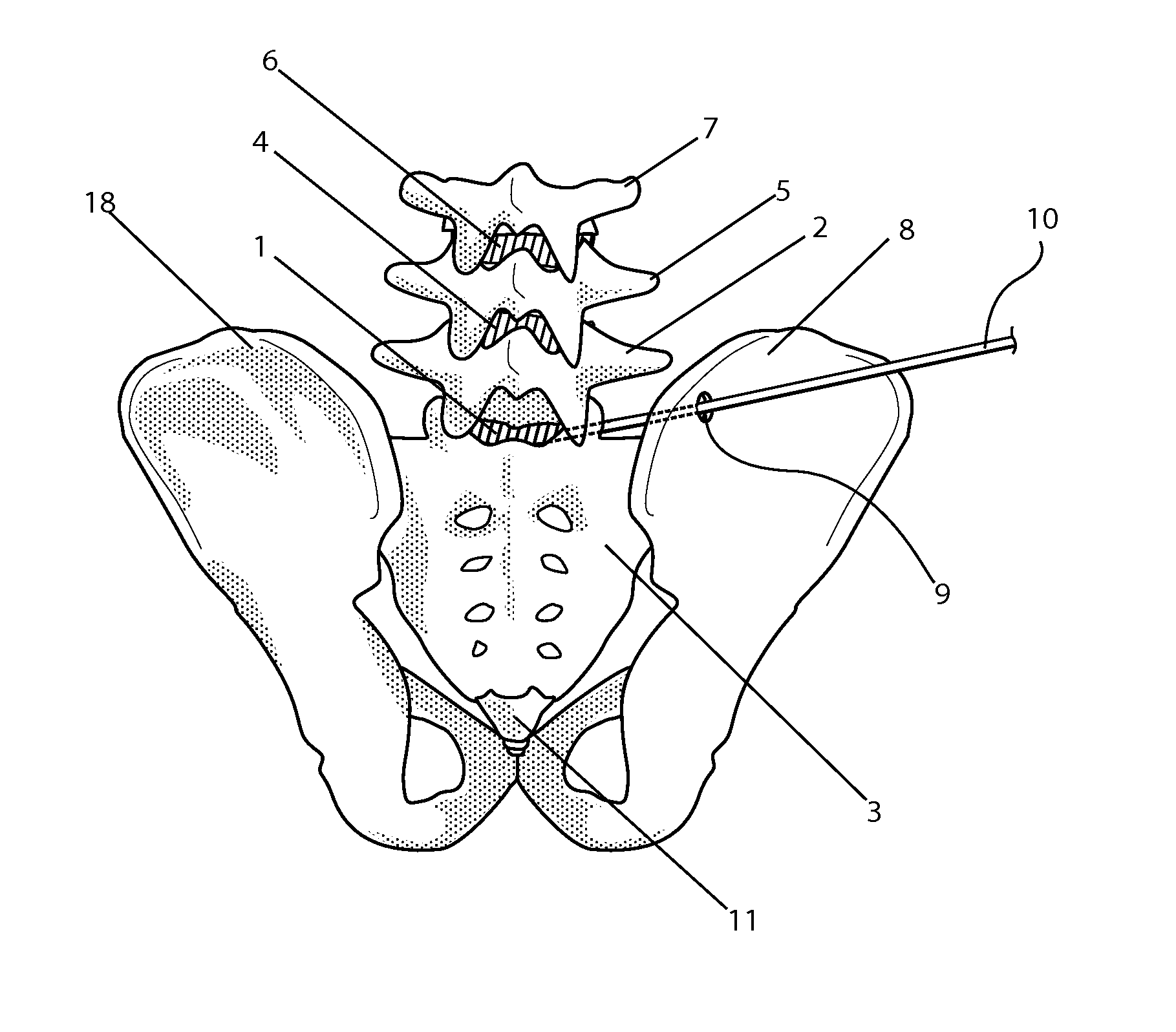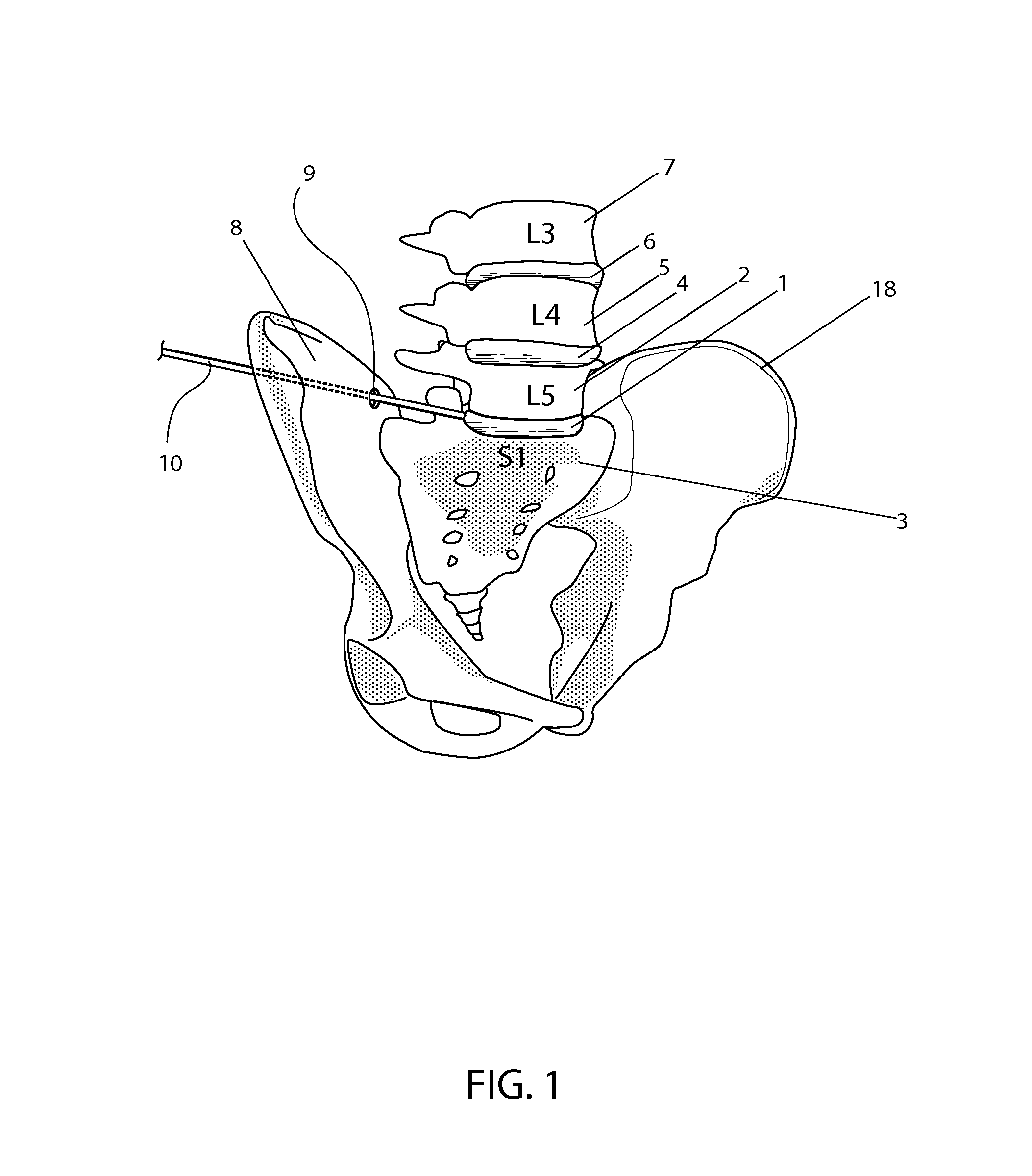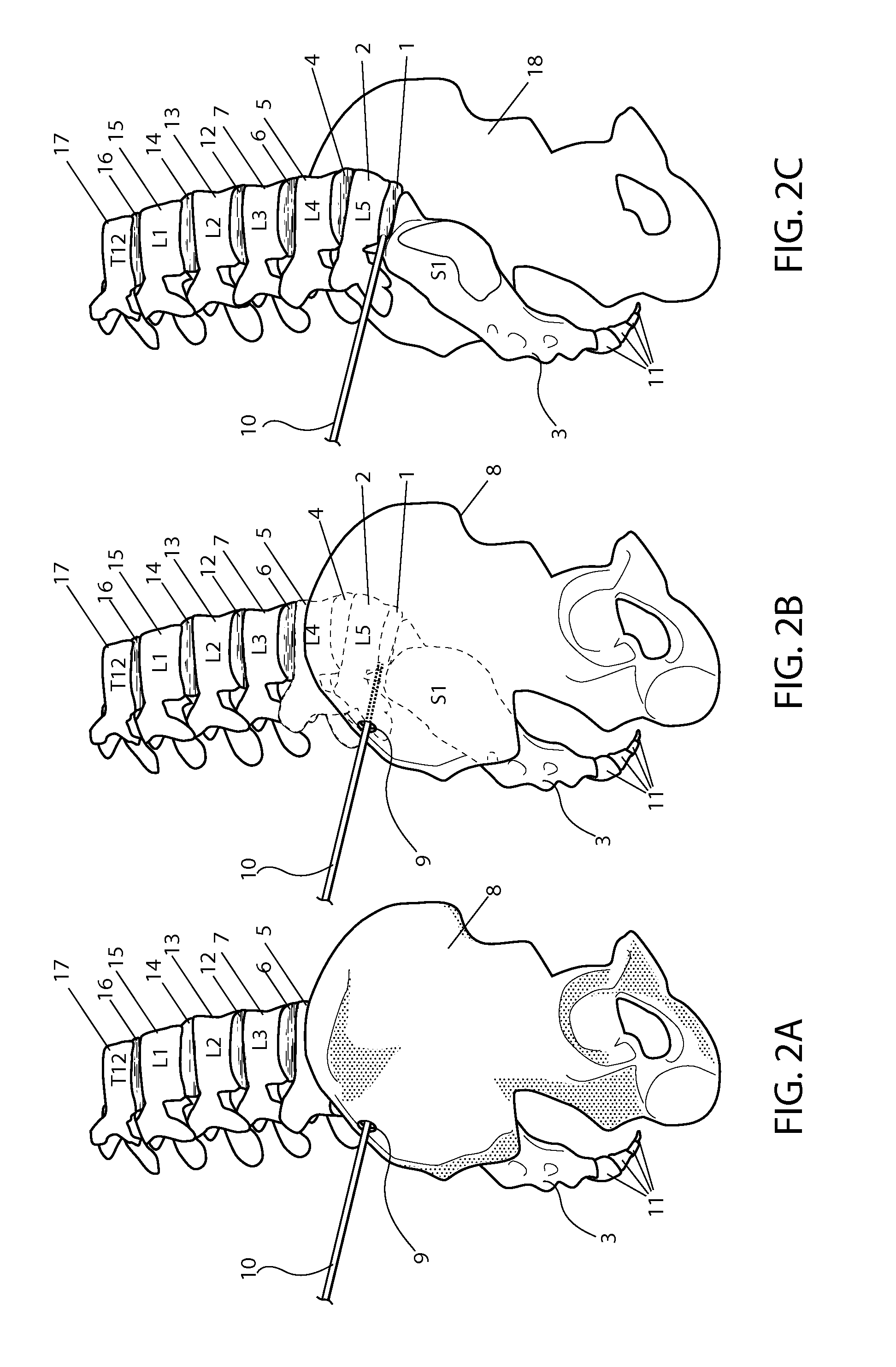Trans-osseous oblique lumbosacral fusion system and method
a trans-osseous oblique lumbar interbody and fusion technology, applied in the field of medical procedures, can solve the problems of less effective shock absorption and degradation degeneration and spinal facture and degeneration of the intervertebral dis
- Summary
- Abstract
- Description
- Claims
- Application Information
AI Technical Summary
Benefits of technology
Problems solved by technology
Method used
Image
Examples
Embodiment Construction
[0084]In the preferred embodiment of the invention, a trans-osseous oblique lateral fusion approach or a TOOLIF approach, is related to a medical procedure to fuse two vertebrae, by accessing a vertebrae or space between vertebrae by traversing the ilium at an oblique angle. In certain embodiments of a TOOLIF approach, a lumbrosacral joint, including the disc space located between the 5th lumbar vertebra and the sacrum, is accessed through either the left 18 or right 8 ilium, in the preferred embodiment of the invention. Together, in the preferred embodiment of the invention, the trans-osseous oblique lateral fusion approach enables a minimally invasive approach for the fusion of the 5th lumbar vertebra 2 and the sacrum bone 3.
[0085]The steps that include the TOOLIF approach enable a medical practitioner to access the L5-S1 intervertebral disc 1 space in a minimally invasive manner. Typical fusion approaches found in the prior art have a number of disadvantages that the TOOLIF appro...
PUM
 Login to view more
Login to view more Abstract
Description
Claims
Application Information
 Login to view more
Login to view more - R&D Engineer
- R&D Manager
- IP Professional
- Industry Leading Data Capabilities
- Powerful AI technology
- Patent DNA Extraction
Browse by: Latest US Patents, China's latest patents, Technical Efficacy Thesaurus, Application Domain, Technology Topic.
© 2024 PatSnap. All rights reserved.Legal|Privacy policy|Modern Slavery Act Transparency Statement|Sitemap



